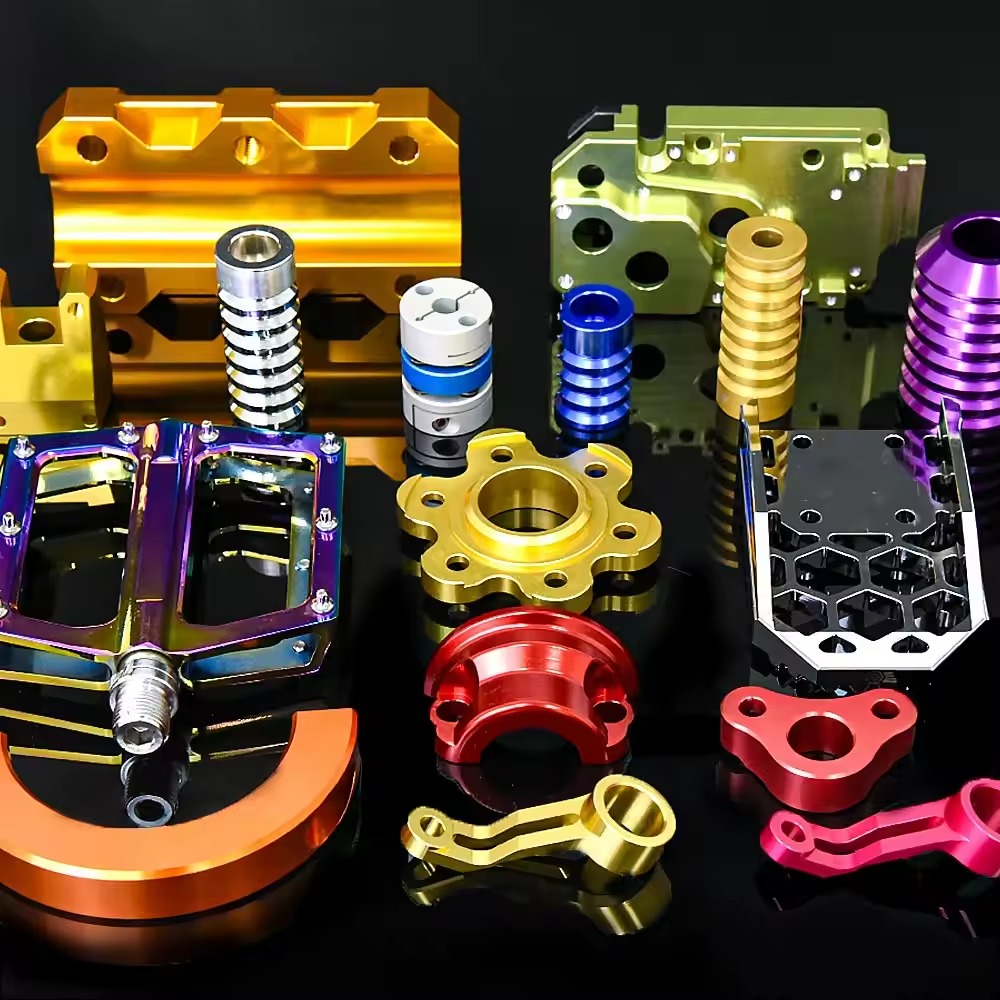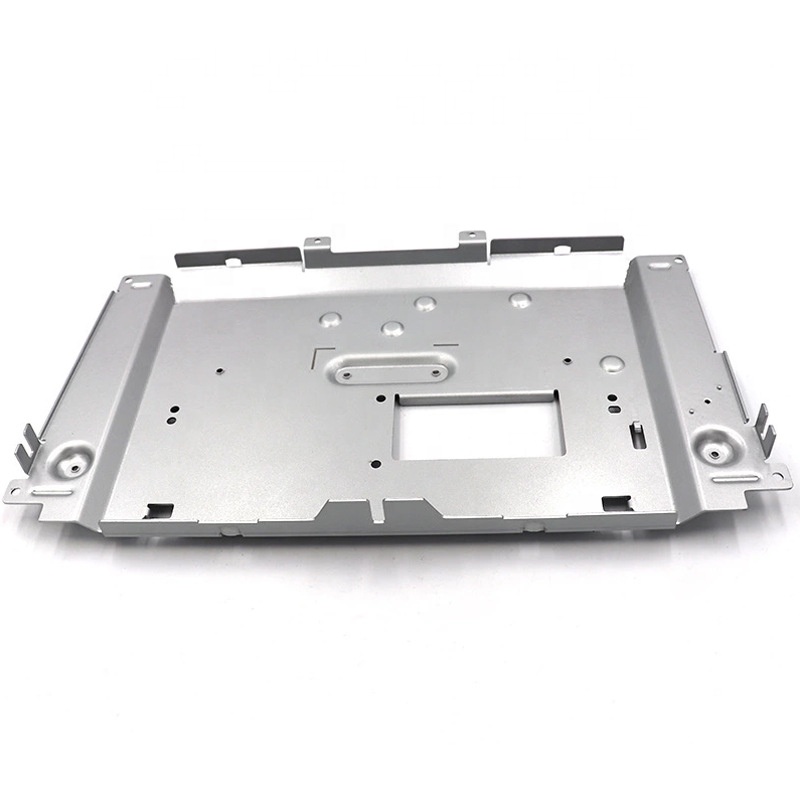Engineering Guide: How to Select the Right Metal Thickness for Your CNC Machining Project
Why Thickness Selection Matters
In CNC machining and sheet metal fabrication, thickness is not just a number — it is an engineering decision that directly impacts:
Weight – product portability, ease of assembly, and shipping cost
Stiffness – structural performance and long-term durability
Corrosion resistance – how parts perform in indoor vs outdoor environments
Manufacturability – whether the design can be produced consistently and cost-effectively
👉 A question we hear from clients almost every week is:
“Is 1.5mm aluminum strong enough, or should I use 19 gauge steel instead?”
The correct answer is never a simple “yes” or “no” — it requires engineering analysis, material knowledge, and application context.
Aluminum vs. Steel: Key Engineering Differences
1. Material Properties
Aluminum (6061, 5052, 7075)
Lightweight (density ≈ 2.7 g/cm³)
Naturally corrosion-resistant, supports anodizing or powder coating
Easier to machine and form, but lower stiffness (E ≈ 70 GPa)
Steel (mild steel, stainless steel)
Higher density (≈ 7.8 g/cm³) — ~2.5–3x heavier than aluminum
Greater stiffness (E ≈ 200 GPa)
Requires coatings (paint, plating, powder coating) for corrosion protection
2. Thickness Conversion Reference
0.064 inch ≈ 1.6mm (common in aluminum panels)
1.5mm ≈ 0.059 inch
19 gauge steel ≈ 1.0mm (U.S. standard; varies by material type)
⚠️ Important Note: Gauge systems are not universal. Always specify thickness in millimeters with the material type to avoid manufacturing errors.
Engineering Performance Considerations
Stiffness & Deflection – Under identical loads, 1.0mm mild steel typically deflects 30–50% less than 1.5mm aluminum. However, high-strength aluminum alloys (e.g., 7075-T6) can approach or exceed mild steel performance.
Weight Trade-Off – A 1.5mm aluminum panel is 40–50% lighter than a comparable steel panel. For portable equipment or aerospace parts, weight reduction is often more valuable than maximum stiffness.
Design Optimization – Aluminum parts can be stiffened with ribs, bends, or extrusion profiles. Steel is more efficient for flat, thin structures where rigidity is critical, but the penalty is higher weight.
Real-World Application Examples
Electronics enclosures → Clients often choose 1.5mm aluminum with anodizing for a balance of light weight and corrosion resistance.
Automotive brackets → Powder-coated 19 gauge steel offers superior stiffness for vibration loads.
Portable equipment → Aluminum is preferred to reduce overall carrying weight.
Case highlight: One European client switched from painted steel enclosures to anodized aluminum. Result: lighter products, reduced shipping costs, and better corrosion resistance in outdoor use.
FAQ: Common Questions from Clients
Q1: Is aluminum always weaker than steel?
Not necessarily. While mild steel is stiffer, high-grade aluminum alloys (like 7075-T6) can provide excellent strength-to-weight ratios.
Q2: Why can’t I just specify “19 gauge”?
Because gauge values differ between steel, aluminum, and stainless steel. Always specify millimeters + material type for clarity.
Q3: Which option is more cost-effective?
It depends on volume and application. For prototypes or lightweight products, aluminum may reduce machining and shipping costs. For mass production of rigid structures, steel is often more economical.
Q4: How does surface finishing affect the choice?
Aluminum supports anodizing for corrosion resistance and aesthetics. Steel requires coatings (zinc plating, powder coating) to achieve comparable durability.
How Bergek CNC Supports Your Decision
DFM Review – Every quotation is reviewed by engineers to validate manufacturability and performance.
Material Guidance – Side-by-side comparison of alloys, coatings, and forming processes.
Consistency Guarantee – From prototypes to mass production, our ISO 9001 quality system ensures every batch matches your original specification.
👉 When you ask, “Is 1.5mm aluminum strong enough?”, our answer is based on engineering data, production experience, and real-world testing — not just opinion.
Final Thought
Selecting the right thickness is never a “one-size-fits-all” decision. It’s always a balance of engineering performance, cost, and application requirements.
At Bergek CNC, we help clients worldwide make these choices with confidence — ensuring every design is both manufacturable and reliable.
Recommended Keywords for this Page
CNC machining service, precision sheet metal, aluminum vs steel thickness, engineering support, DFM review, manufacturability
READ MORE:
- Metal Surface Treatment Guide | ISO 9001 Certified CNC Machining & Finishing Partner
- Short Lead Times, High Precision: Why More Manufacturers Rely on ISO 9001 CNC
READ MORE:
- ISO 9001 certified 5-axis CNC machining supplier in China
- How 5-Axis Machining Improves Aerospace Components
- What is 5-Axis CNC Machining? Engineer’s Decision Guide & ISO 9001 Certified Solutions
- Metal Surface Treatment Guide | ISO 9001 Certified CNC Machining & Finishing Partner
- Short Lead Times, High Precision: Why More Manufacturers Rely on ISO 9001 CNC
- For Tight Specs & Short Lead Times: How ISO 9001 CNC Stands Out
- Compliance and Speed: Meeting Export Demands with ISO 9001 Certified CNC Machining
- Export Success Stories: Why Global Companies Choose BERGEK’s ISO 9001 Certified CNC Machining
READ MORE:
- Quality Control in 5-Axis CNC Machining
- 5-Axis CNC Machining for Customized Parts
- What Industries Need 5-Axis CNC Machining? | Expert Analysis by BERGEK
- 5-axis Machining Tolerances & Surface Finish | Engineering Guide – BERGEK ISO 9001
- ISO 9001 certified 5-axis CNC machining supplier in China
- How 5-Axis Machining Improves Aerospace Components
- What is 5-Axis CNC Machining? Engineer’s Decision Guide & ISO 9001 Certified Solutions
- Metal Surface Treatment Guide | ISO 9001 Certified CNC Machining & Finishing Partner
- Short Lead Times, High Precision: Why More Manufacturers Rely on ISO 9001 CNC
















